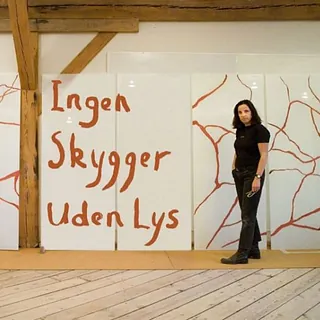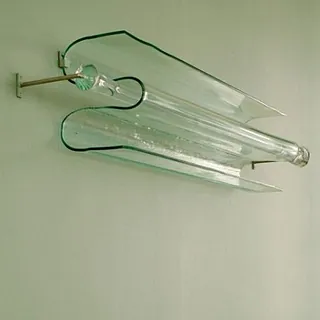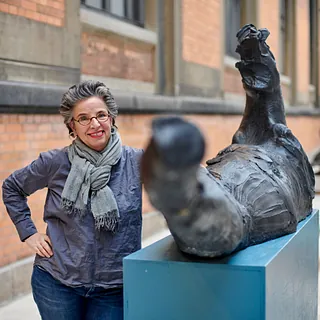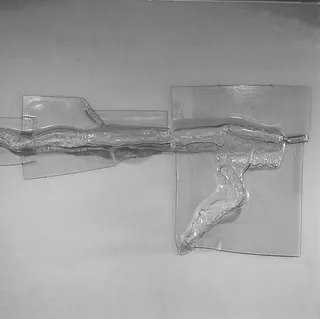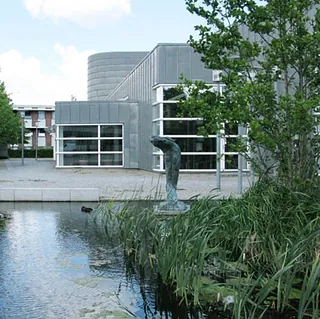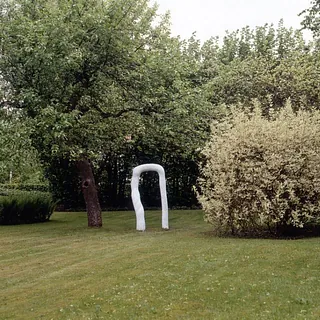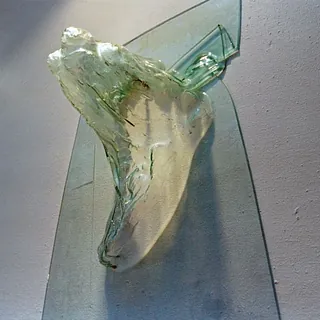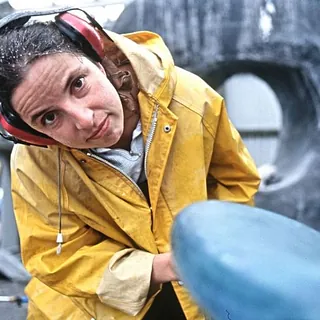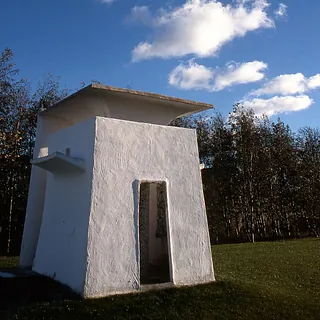PUBLIC WORKS
...I have always been fascinated by the perspective - of being able to accelerate or slow down a movement by modeling a shape. larger or smaller in relation to the other parts of sculpture - it is a small pocket of time in itself....
My bronze sculpture Hippocamp from 2003, was sold to the National Gallery of Denmark in 2007.
Hippocamp is the result of a splicing between a horse that rolls in the snow and a Viking ship I had seen at the vikingtidsmuseet in Oslo.
The movement that sums up these elements are the elevation of the tall head in profile, which turns into the wide broad shape, is an expression that characterizes many of my sculptures.
Eli Benveniste, 2002, Shape is volume, movement and content:
... I have worked with several different materials - clay, cement, stone and glass, but regardless of the material, always with a logical, organic structure of the sculpture. When I first started modeling, I was advised to model organically and it taught me about the movement. Working with the movement, I discovered that there is a logic in the construction of a sculpture, a logic that can also be seen in nature's own productions. I have used this, especially when working with glass.
When the glass begins to melt, nature and the case occur. A rhythm, a fall - the glass's own being, becomes more clearly proportional to the time the glass is melted. I am the one who builds the basic form that the glass then breaks down in its own way. I can only prepare for the incident, which suits me well, because the case is of great importance for the making of the sculpture.
Time stops in the middle of the movement - you can read the story in the melted glass, all the information about what happened, freezes - like the insect that was moving from one flower to another and was enclosed inside a lump of resin a thousand years ago.
Rødovre municipality, 2001
The bronze sculpture “The Fall” was donated by Rødovre Centrum A/S at Rødovre Municipality's 100th anniversary in 2001. Eli Benveniste is the artist behind the sculpture. She often works with clay as a material, and it is this material that forms the basis for the bronze's design.
The sculpture is placed in the stylized lake that ends the through basin of Rådhuspladsen, immediately to the right of the entrance to Kulturhuset Viften. The sculpture is not positioned axially in relation to the water element, but stands a little more modestly with the “wild”, lush water biotope as a background. The placement in the basin means that the distorted figure can only be viewed from a certain distance and that it almost merges with the water around it.
The bronze sculpture is barely shaped like a female figure. Perhaps she is being dissolved by the water or merging with the water - perhaps it has emerged from the water around it... an expression of pain and imbalance rests over the small distorted figure. What emotions are expressed through the figure and what fall does the title of the artwork refer to?
sophienholm, 2001
Eli benveniste in 2002, about Balance:
I bought a big block of marble four years ago - I wanted to make something that was smoother and simpler.
Usually I do not get ideas in foreign materials, as I must first know the nature of a material. Therefore, I took a model in clay, which had the characteristic that I could imagine it in all sizes. Getting to know a new material is fascinating and initially frustrating. And it can take a long time. Everything I thought I knew I had to discard - the stone, the glass, the cement will something else, it will itself - and always on its own terms.
During the periods when I threw myself into the stone carving, it seemed to me that I made the same sculpture six times before reaching the place where I imagined the stone holding up and the sculpture to begin. So different from clay - it helped when this time I put the clay model away and stopped trying to copy the clay features. I was intoxicated by the work - the sound, the direction of the stone, the different resistance. It crystallized during the battle and jumped off into small flakes depending on which iron I used.
The stone began to open to me and I slowly got the shape moving - the stiff, thin, slightly silly hard compared to the stubborn, gentle, soft. An organic logical movement that grows out of the ground and forms an arc. The hard one pushes the soft out of balance, but the soft gives in and uses its greater density to pull the hard down with it. I follow in an alternation between what I know and what I do not know, a dead passage, a living course, depressions of strokes on the smooth surface, like the distance between the first raindrops.
What I do not see, I jump into the uncertainty that I will be able to see later when new angles show the way. Italians say there is always enough stone. If you cut too much of a place, you change the curve accordingly. When I work with clay it has always wondered how much clay needed to fill a mold. Conversely, I can now say about the stone that it is amazing how much it takes to achieve the same volume.
When I was younger I thought there was only one solution that had to be the best and killed a lot in this endeavor. Now I think differently and mean to see many solutions in the work of sculpture, and often more that are equally good. This insight has given me more freedom.
